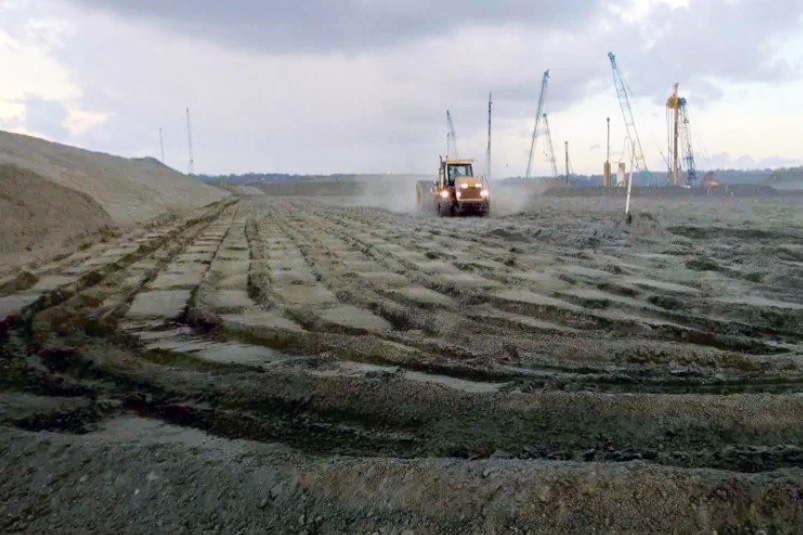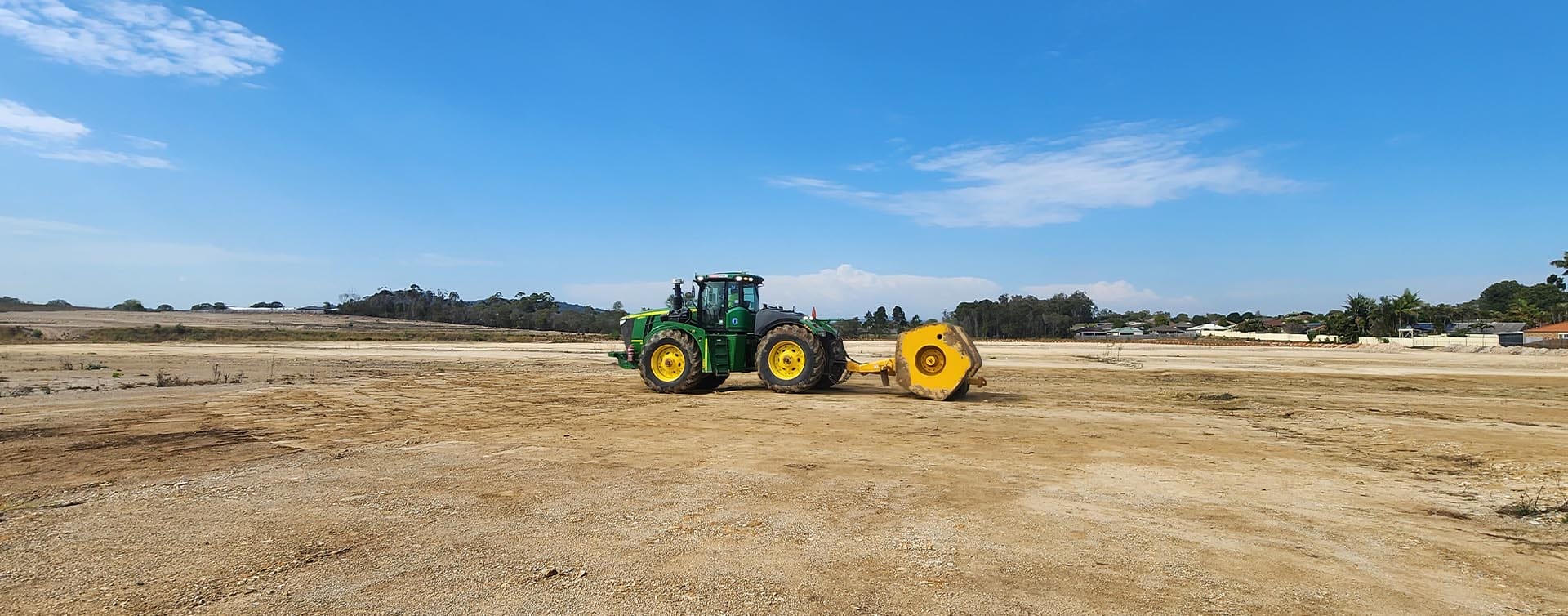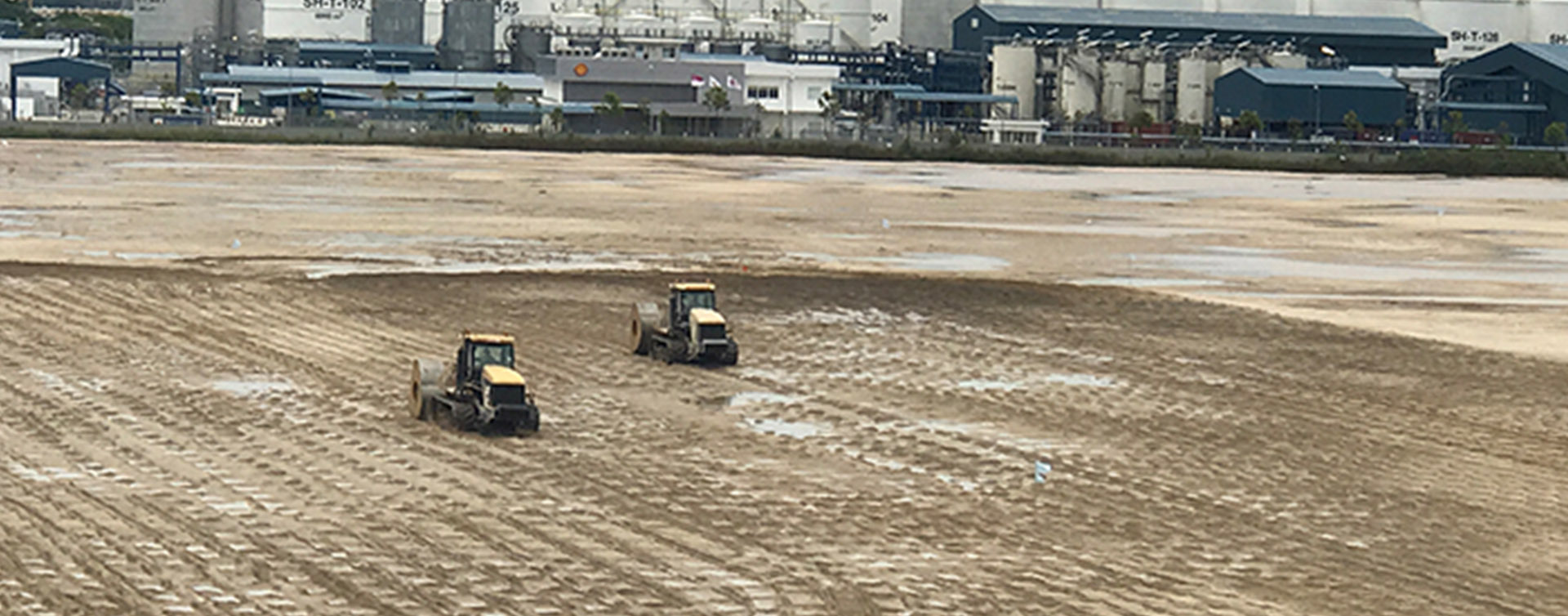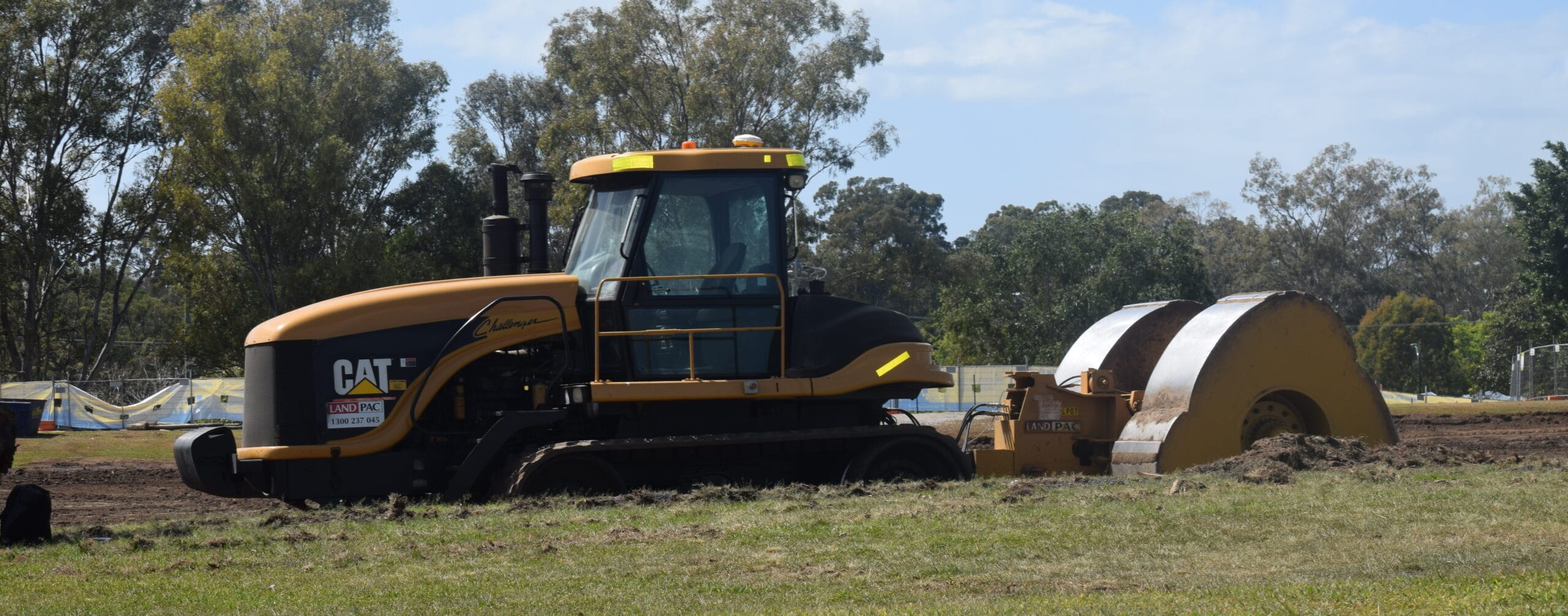Moin Container Terminal
Project Overview
The expansion of Moin Container Terminal in Limon, Costa Rica, crucial for handling 80% of the country’s freight, involved developing a 40Ha reclaimed area with dredged sand fill. Landpac was tasked with compacting the upper 3 meters to a Relative Density of 90%.

Landpac's Solution
Landpac employed High Energy Impact Compaction (HEIC) to guarantee the soil stability and strength required for the terminal’s efficient operation.
Challenges
Ensuring a robust foundation for the terminal’s extensive container yard, berths, and quay walls was pivotal, given the terminal’s strategic importance for Costa Rica’s import and export activities.
Application of HEIC
Container Yard Areas: HEIC was instrumental in preparing a stable ground for heavy container stacks and handling equipment.
Berths and Quay Walls: This method strengthened the foundation of crucial docking areas, enhancing their load-bearing capacity.
Benefits
Improved Soil Compaction: HEIC significantly enhanced soil density and load-bearing capacity, essential for the terminal’s functionality.
Minimised Settlement Risks: The method effectively reduced settlement potential, crucial for the long-term integrity of the terminal.
Landpac’s implementation of HEIC at Moin Container Terminal was key to its successful expansion, laying a solid foundation for one of the most important logistical hubs in Costa Rica.
Client: APM Terminals
Principal Contractor: [Confidential]
Ground Improvement Contractor: Landpac
Latest news

Understanding High Energy Impact Compaction (HEIC)
High Energy Impact Compaction (HEIC) revolutionises ground improvement with its ability to achieve superior soil density and stability. Unlike traditional methods, HEIC uses advanced rollers and compaction technology to penetrate deeper soil layers.

Laying the Foundation: Why ground improvement engineering matters
Ground improvement enhances soil stability and strength, reducing risks and costs in construction. Techniques like HEIC ensure efficient, sustainable solutions for safer infrastructure.

HEIC’s Role in Sustainable Construction Practices
HEIC boosts sustainable construction by stabilising soil, cutting environmental impact, and reusing existing land. It’s a fast, efficient way to build stronger, longer-lasting infrastructure while protecting the environment.
